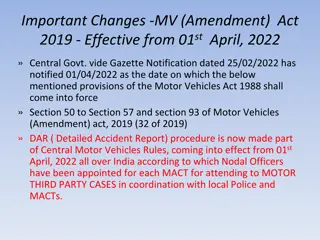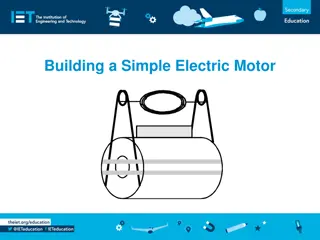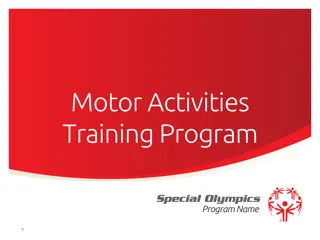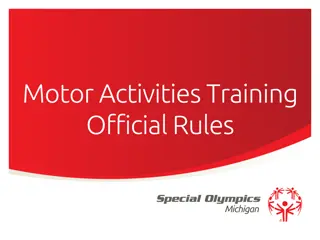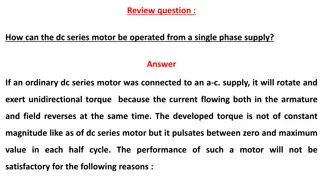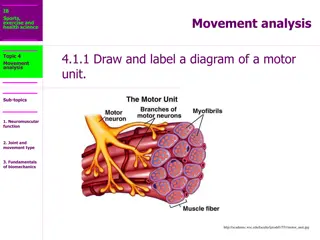
VOLVO G726B MOTOR GRADER Service Repair Manual Instant Download
Please open the website below to get the complete manualnn//
Download Presentation

Please find below an Image/Link to download the presentation.
The content on the website is provided AS IS for your information and personal use only. It may not be sold, licensed, or shared on other websites without obtaining consent from the author. Download presentation by click this link. If you encounter any issues during the download, it is possible that the publisher has removed the file from their server.
E N D
Presentation Transcript
Service Information Document Title: Description Function Group: 000 Information Type: Service Information Date: 2015/9/29 Profile: GRD, G726B [GB] Description Intended use The machine is intended to be used under normal conditions for the operations described in the Operator's Manual. If it is used for other purposes or in potentially dangerous environments, for example, an explosive atmosphere, areas with dust containing asbestos, etc., special safety regulations must be followed and the machine must be equipped for such use. Contact the manufacturer or dealer for further information. Engine The engine is a four stroke cycle, in line six cylinder, turbocharged diesel with overhead valves and charge air cooler. These engines are of the low emission type and all models have VHP (Variable Horsepower). VHP All Volvo grader models have engines that provide 2 different power levels depending on the gear selected by the operator. For non-All Wheel Drive equipped graders, forward gears 1, 2, and reverse 1, have reduced power to minimize wheel slip. In forward gears 3 through 8, and reverse gears 2 through 4, engine power is automatically increased. For All Wheel Drive equipped models with the All Wheel Drive system turned OFF, the function of the VHP is the same as above. For All Wheel Drive equipped models with the All Wheel Drive turned ON, the engine power is increased for all gears. There is no operator selectable control over the VHP system. Electrical system The electrical system is a 24VDC, negative-ground system. Power is supplied by two 12VDC batteries connected in series. Battery charging is accomplished using a standard 75 amp alternator and an optional 100 amp alternator. Electrical power can be disconnected using a ground isolation switch. Clutch A multiple wet disc clutch is mounted to the engine flywheel and connected to the transmission with a driveshaft. The clutch must be used when starting to move or when changing direction. Transmission The transmission has eight forward and four reverse speeds. It is a fully sequential, direct drive, powershift unit utilizing a countershaft design. Final drive/tandems Final drives are single reduction in models G710B to G746B and double reduction in the G780B. Each has an operator controlled lock/unlock differential. Rear axles are case hardened, full floating design, supported on double row spherical roller bearings. Tandem wheels are chain-driven. Brakes Hydraulically actuated, oil disc service brakes are located at the four tandem drive wheels. The crossover dual braking circuits provide even braking on both sides of the grader. If the engine stalls, or hydraulic boost pressure becomes unavailable, full braking capability is available through a reserve system. An electric motor supplies the power required to bring the grader to a safe stop. The parking brake is a spring apply/hydraulic release, disc-type brake. It is driveline-mounted to the transmission output shaft. An accumulator in the circuit stores system pressure allowing the brakes to remain released in the event of system pressure loss for about 30 minutes. Steering The steering system is a closed-center dynamic signal load sensing system. The hydraulic steering system incorporates two steering cylinders. The leaning wheel feature and articulated frame can be used to decrease turning radius. There is no manual steering.
Cab and frame Either the canopy or fully-enclosed cab are equipped according to the FOPS-ROPS stipulations and provided with heating and ventilation with air conditioning as an option. All controls and gauges are housed in either the fully adjustable steering pedestal or the right-hand side console. Ergonomic seating and hydraulic control lever placement ensure operator comfort and efficiency. The frame articulates 22 degrees right or left and uses anti-drift lock valves to ensure stable operation. MBCS (Moveable Blade Control System) Blade mobility permits steep ditch cutting angles and back sloping outside of overall machine width. The circle is held in place by adjustable clamp plates and guide shoes. Bearing surfaces are DURAMIDE - faced to maximize service life. Hardened teeth are cut on the outside of the circle. Oil is directed to the two drive cylinders by a circle timing valve. The cylinders are arranged 90 degrees out of phase to insure consistent power. Moldboard is provided with replaceable cutting edge and end-bits. The drawbar is a narrow T design for optimum visibility to the work area. Hydraulic system The closed-center hydraulic system uses a pressure and flow compensated (load-sensing) variable displacement piston pump. The pump supplies oil to the implements, the steering and the engine cooling fan system. The cooling fan is driven by a fixed displacement vane-type motor. Fan speed is variable and is determined by various cooling requirements. The fan operates between predetermined minimum and maximum speeds. The fan remains at its minimum speed until there is a demand for cooling. Fan speed will automatically increase with the demand for cooling. Lock valves (counterbalance valves) are incorporated into the blade lift, moldboard tilt, circle shift, wheel lean and articulation circuits to prevent cylinder drift. The control levers are short throw, feathering type located on an adjustable steering pedestal. All Wheel Drive - (AWD) G726B and G746B are All Wheel Drive models. The system operates in gears 1 through 7. It is powered by two electronically controlled, variable displacement hydraulic pumps in a closed loop system. Each pump supplies one front wheel motor. Front wheel motors are two-speed, high torque, radial piston, cam lobe type. Each wheel motor has a separate speed sensor. Equipment and attachments The circle, drawbar and moldboard equipment is fully maneuverable using hydraulic cylinders. Optional attachments include: Dozer blade Rear-mounted ripper-scarifier Mid-mounted scarifier Front-mounted scarifier Windrow eliminator Push block (counterweight for ripper) One-way plow V-plow Hydraulic snow wing (high and low bench) A-frame (used with V-plow and One-way plow only)
Service Information Document Title: Product plates Function Group: 000 Information Type: Service Information Date: 2015/9/29 identification Profile: GRD, G726B [GB] Product identification plates The following illustrations and text show which product plates are installed on the machine. These numbers are recorded at the factory. Always quote the motor grader Model Number and the Product Identification Number when ordering spare parts, and in all telephone inquiries or correspondence. Figure 1 Product identification plate location Engine (1) The engine serial numbers are found on a plate on the left-hand side of the engine on models G710B to G730B. G740B, G746B and G780B models have the serial number stamped into the right-hand side of the engine block. Cab (2) The ROPS and FOPS serial number plates are found inside the cab on the left-hand post behind the operator's seat. The ROPS plate states the model and serial number, specification, maximum machine mass, and bolt torque. The FOPS plate states the model, serial number and specification. Figure 2 ROPS and FOPS plates Product identification plate (3) This plate is found on the right-hand side of the frame in front of the cab. It has the Model Number and PIN (Product Identification Number) stamped on it. The Model Number is broken down as follows: the first digit designates G700 Models; the next two digits indicate weight and horsepower range.
https://www.ebooklibonline.com Hello dear friend! Thank you very much for reading. Enter the link into your browser. The full manual is available for immediate download. https://www.ebooklibonline.com
Figure 3 Product identification plate The Model Number and PIN must be used in conjunction with the Parts Catalog to order correct replacement parts. Product identification plate (EU/EEA countries) (4) In addition to the above information, this plate shows machine weight, engine power, year of manufacture and has a space for the CE mark. It also is positioned on the right-hand side of the frame in front of the cab. Figure 4 Product identification plate (EU/EEA) Product identification plate for TUV (Germany) (5) This plate is found on the right-hand side of the frame in front of the cab. Figure 5 Product identification plate TUV Transmission (6) The transmission serial number is located on the lower front of the housing. Figure 6 Transmission plate Final drive (7)
The final drive serial number is found on the right-hand side on the rear of the final drive on models G710B to G746B. On G780B models it is found on the top of the center housing. Figure 7 Final drive plate
Service Information Document Title: Transporting the machine Function Group: 050 Information Type: Service Information Date: 2015/9/29 Profile: GRD, G726B [GB] Transporting the machine Use a pressure washer to remove any loose gravel, mud or debris from the grader moldboard, tires or frame. Install both articulation lock pins before loading the grader onto the trailer bed. Figure 1 1. Articulation lock pin Load and unload the grader on a level surface. Ensure the combined height of the trailer bed and the top of the grader cab is lower than local height restrictions or any bridges, overpasses or overhead obstructions expected to be encountered during transport. Refer to . Ensure the transporting equipment is adequate to hold the weight and size of the grader. Place chocks against the truck and trailer wheels. Use a ramp or loading dock. Ensure the ramp is strong enough and has a low angle of rise to the height of the trailer bed. Do not place tie-down cables or chains over or against hydraulic tubes, hoses, cylinders or valves, etc. Attach tie- down cables or chains securely to front attachment points. Obey all local laws concerning loading, unloading or transporting the grader. Wide load permits may be required for graders equipped with tires larger than 14.00. Keep the trailer bed clean. The rotating beacon can be lowered for increased clearance. Lift and release the pivot rod handle on the left-hand side of the bracket. Grasp the handle at the rear of the bracket. Slightly move the bracket upward, and then allow the bracket to pivot until it reaches the end of its travel limit. Return the pivot rod handle to the locked position. 030 Dimensions
Figure 2 1. 2. 3. Rotating beacon light Pivot rod handle Lowered position When loading the grader onto a trailer bed, drive the grader straight and centered with the width of the trailer bed. The centerline of the grader must be directly over that of the trailer bed or railcar. Figure 3 Before securing tie-down cables or chains, position the grader on the trailer bed as follows: 1. Place the transmission in neutral and apply the parking brake. Figure 4 2. Lower the moldboard lengthwise under the grader onto wooden blocks to protect the trailer bed. Do not apply down pressure. Also, lower any attachments such as a scarifier or ripper.
Figure 5 1. Wooden blocks Place grader in the Service position. Refer to 191 Service positions Install chocks at the front and rear tandem wheels. Wedge and nail the chocks in place. 3. 4. Figure 6 1. Wheel chocks 5. 6. 7. Relieve residual hydraulic pressure by operating all the control levers. Remove and retain the ignition key. Lock the cab doors. Turn the battery isolation switch off. It is located inside the engine compartment on the left-hand side of the grader.
Figure 7 1. Battery isolation switch 8. Cover the exhaust opening with heavy gauge plastic and secure in place to prevent dust and moisture entering the engine. Remember to remove the plastic cover before starting the grader. Figure 8 1. Exhaust opening Lifting arrangement and tie-down locations Figure 9 1. 2. 3. 15 maximum lifting angle 10 maximum lifting angle Front and rear tie-down locations (optional or EEC machines)
4. Front and rear lifting points
Service Information Document Title: Storage Function Group: 050 Information Type: Service Information Date: 2015/9/29 Profile: GRD, G726B [GB] Storage Long-term parking When a grader is taken out of service for more than 30 days, you must ensure that it is protected from exposure to the elements. An enclosed structure will protect the grader from rapid temperature changes and decrease the amount of condensation that forms in fluid reservoirs, e.g., engine oil pan, fuel tank, hydraulic oil tank, etc. After you have parked the grader and shut down the engine, perform the following steps: 1. 2. 3. 4. 5. Inspect for leaks and other defects. Correct as necessary Thoroughly wash the grader. Be sure to rinse off any caustic residue. Touch up any areas where the paint has worn away. Clean or replace air filter elements. Open the drain valve at the bottom of the fuel tank and drain 1 liter (approx. 1 US quart) of fuel to remove any water accumulation. Replace engine fuel filters. Add the recommended amount of fuel stabilizer and corrosion inhibitor to the fuel tank. Start and run the engine at 1400 rpm to 1600 rpm with no load for approximately four minutes. Change the engine oil and replace the engine oil filter. Seal the engine exhaust and air intake openings with tape or heavy gauge plastic. If tires are to be left on, raise the grader and place it on blocks to keep the tires off the ground. Deflate and cover the tires. Turn off the battery isolation switch. Remove batteries and store them in a cool, clean, dry and well-ventilated area where the temperature is between 0 C and 21 C (32 F and 70 F). Be sure batteries are fully charged. Remove all objects which do not belong in or on the grader. Place a "Do Not Operate" or similar warning tag on the steering wheel to indicate that the Grader has been taken out of service and remove the ignition key. Coat all machined and unpainted surfaces (including moldboard) with grease to prevent rust forming. Coat all exposed chrome plated surfaces on hydraulic cylinder piston rods with a thin layer of grease. Grease all door hinges. Latch and lock the cab and compartment doors in the fully closed position and store the keys in a safe place. 6. 7. 8. 9. 10. 11. 12. 13. 14. 15. 16. 17. 18. Preparing for operation after long-term parking Perform the following steps before putting the grader back into service: 1. 2. Inspect for leaks and other defects which may have occurred during storage. Thoroughly wash the grader. Remove all grease and coatings installed as Long term parking steps 13 and 14 on the previous page. Remove the tape or heavy gauge plastic from the engine exhaust and air intake openings. Ensure that all ports, hatches, and openings, including the engine compartment and cooling module areas of the machine, are free of animal and birds nests or other debris. Lubricate all grease points. Refer to the Operator's Manual. Install fully charged batteries. Turn on the battery isolation switch. Inflate the tires to the correct pressure. Refer to the Operator's Manual. Lower the grader from the storage blocks. Perform all appropriate pre-start checks. Refer to the Operator's Manual. Start and run the engine at 1400 rpm to 1600 rpm with no load for approximately four minutes. If any warning lamps and the alarm energize or gauges show abnormal readings, shut down the engine. Report the problem and have it repaired by a qualified service technician. 3. 4. 5. 6. 7. 8. 9.
Service Information Document Title: Grader setup instructions Function Group: 050 Information Type: Service Information Date: 2015/9/29 Profile: GRD, G726B [GB] Grader setup instructions General Volvo motor graders are prepared for export shipment in different configurations. Graders can be shipped as knock-down units in containers, roll-on/roll-off (RO-RO) machines or complete, drivable graders with a fully assembled cab. RO-RO machines are also drivable, but the upper part of the cab structure is removed and stowed on the front frame. The doors and upper cab glass are packaged in a crate attached to the grader front frame. This section describes the reassembly procedure for a typical grader shipped as a knock-down unit in a standard container. Optional attachments may accompany the grader in the same container. The reassembly procedure depends on the local unloading facilities. General shop tools are required. It may be necessary to drive the machine under it's own power after being unloaded. Before starting and moving the grader, perform the General walk-around inspection. See below. Refer to the grader Operator's Manual for complete details. The Operator's Manual is found in the manual box inside the cab behind the seat. These instructions cover the following machine models, Serial Number 35000 and up: G710B, G720B, G730B, G740B, G780B, G726B, and G746B. Knock-down unit Removal from the container 1. Remove the tarpaulin from the container. Remove the reinforcing rods from the container and swing the mainstay to one side. Figure 1 Removing grader from container WARNING Only use lifting devices with adequate capacity.
2. Ensure the lifting lug nuts and bolts are tight before lifting the grader. Attach crane hooks to the lifting lugs. Install a spreader bar between the cables above the rear lifting lugs to prevent damage to the grader. Remove any retaining wooden blocks and lift the grader out of the container. If there is limited time to use the lifting device, lower the grader onto the ground. If there is full use of the lifting device, lower the grader just enough to install the rims and tires. Use a safe lifting device to remove the rims and tires from the container. Install the rims and tires onto the front and rear wheel hubs. Generally, the front tires are mounted with the tread facing the opposite direction of the rear tires. This promotes self-cleaning of the tire. However, the driving front wheels of an All Wheel Drive grader must have the tire tread facing the same direction as the rear tire tread. NOTE! If an overhead crane or other lifting device is not available to install the wheels, refer to Installing rims and tires without a crane. See below. 3. 4. Use a tire pressure gauge to check the air pressure in the tires. Adjust the air pressure to 241 kPa (35 psi). Refer to the Operator's Manual for further information. Lower the grader to the ground. Torque-tighten the rim bolts to 644 712 N m (66 73 kgf m; 475 525 lbf ft) in a diagonal pattern. Do not torque-tighten the rim bolts in series around the wheel hubs. Sometimes areas of the grader are coated with a surface treatment to protect the machine from corrosion during transportation. 5. 6. Figure 2 Removing surface treatment Remove the protective coating using mineral spirits or degreasing solvents. Spray on until the surface to be cleaned is completely wetted. Let stand for 15 minutes. Wash off with a power washer. Thoroughly inspect all hydraulic cylinder piston rods and seals for signs of damage or corrosion. Complete this procedure before operating any of the hydraulic cylinders. 7. 8. Remove the plastic covering from the engine air intake stack and exhaust pipe. Install the air cleaner rain cap or precleaner (optional). Figure 3 1. Air cleaner rain cap
2. Exhaust stack On models G710B to G730B, torque-tighten the band clamp to 9,6 11 N m (1 kgf m; 7 8 lbf ft). On models G740B to G780B, torque-tighten the bolts to 50 70 N m (5 7 kgf m; 37 52 lbf ft). 9. Install the exhaust stack. Torque-tighten the bolts to 50 70 N m (5 7 kgf m; 37 52 lbf ft). NOTE! If it is necessary to move the machine to another location before continuing with the rest of the assembly, perform the General walk-around inspection. See below. General walk-around inspection Figure 4 Perform the following general walk-around inspection. Look for oil and coolant leaks. Check for tire damage, pinched hoses and loose bolts. Repair as necessary. Visually check the levels of the engine coolant, engine oil, hydraulic oil and transmission oil as outlined on the following pages. Replenish fluids as required. Ensure all tools and other loose objects are removed from the machine. Turn the battery isolation switch to the I position. Ensure the transmission is in NEUTRAL and the parking brake is engaged (control knob pushed in). Visually check around the machine. Ensure all personnel are clearly away from the area. Signal the intention to start the engine. Start the engine when it is safe to do so. When it is safe to do so, release the parking brake and move the grader. Check the engine oil level
Suggest: For more complete manuals. Please go to the home page. https://www.ebooklibonline.com If the above button click is invalid. Please download this document first, and then click the above link to download the complete manual. Thank you so much for reading
Figure 5 Check the engine oil level with the engine off. The machine should be parked on level ground to check the engine oil. Check the oil when the engine is cold. The oil filler cap and dipstick are located on the left-hand side of the engine. Withdraw the dipstick and check the oil level. The oil level must be between the marks on the dipstick. Add engine oil as required. Refer to 160 Recommended lubricants for correct oil type. Check the oil for contaminants or water. Checking coolant Figure 6 The expansion tank should be 2/3 full, at the MAX mark when the engine is warm. The control lamp for the coolant level lights up when the level in the expansion tank is too low. Top up when required. Refer to The coolant level must never be below the minimum mark. Transmission oil level 160 Coolant for more information.
Figure 7 1. Transmission oil level sight glass Prior to starting the machine, ensure the transmission oil level sight glass is full. (The oil level sight glass is located on the left-hand side of the transmission case.) The sight glass should be full when the engine is shut down. Check the transmission oil level at operating temperature with the engine running. To check the oil: Park the grader on level ground and place the transmission in NEUTRAL. Apply the parking brake and lower the moldboard and all attachments to the ground. With the engine speed at idle, the oil level should be at the middle of the sight glass. Refer to for correct oil type. 160 Recommended lubricants Checking the hydraulic oil fluid level Figure 8 The hydraulic tank oil filler cap and dipstick are located at the rear of the grader on the left-hand side, inside the rear side door. Clean any dirt from around the filler cap.
https://www.ebooklibonline.com Hello dear friend! Thank you very much for reading. Enter the link into your browser. The full manual is available for immediate download. https://www.ebooklibonline.com




